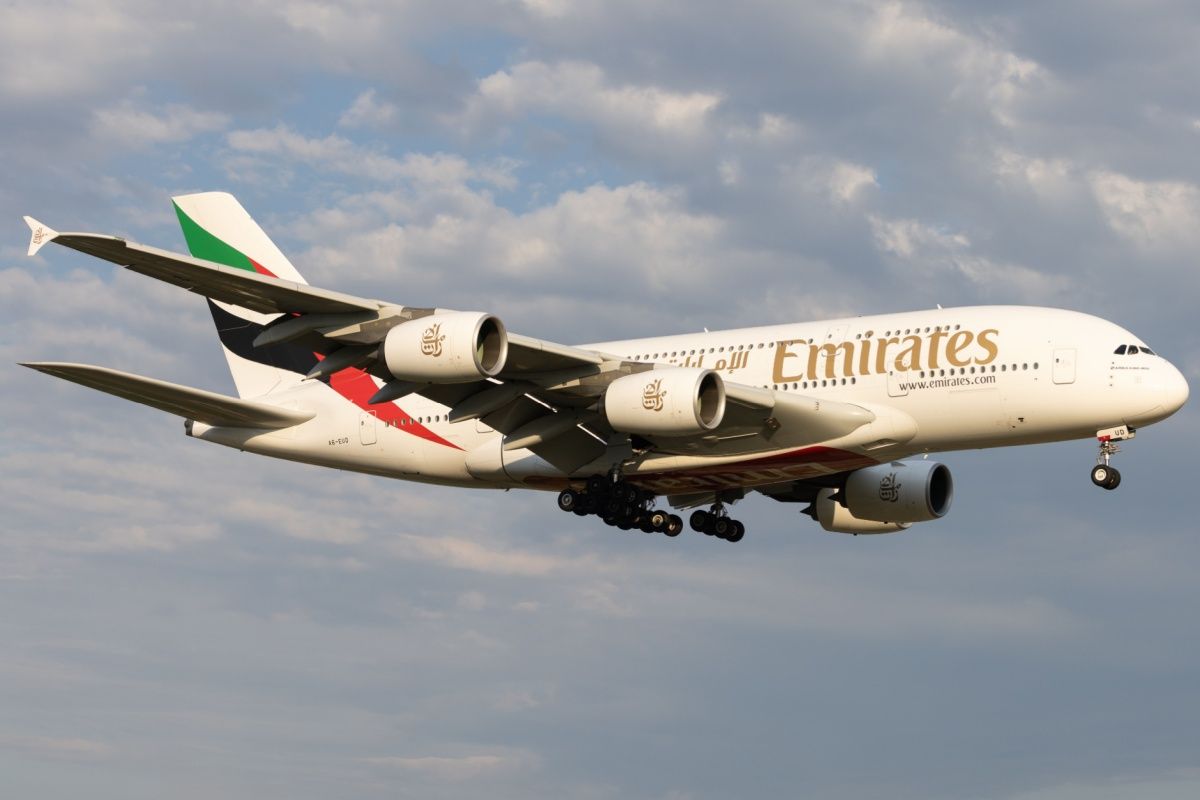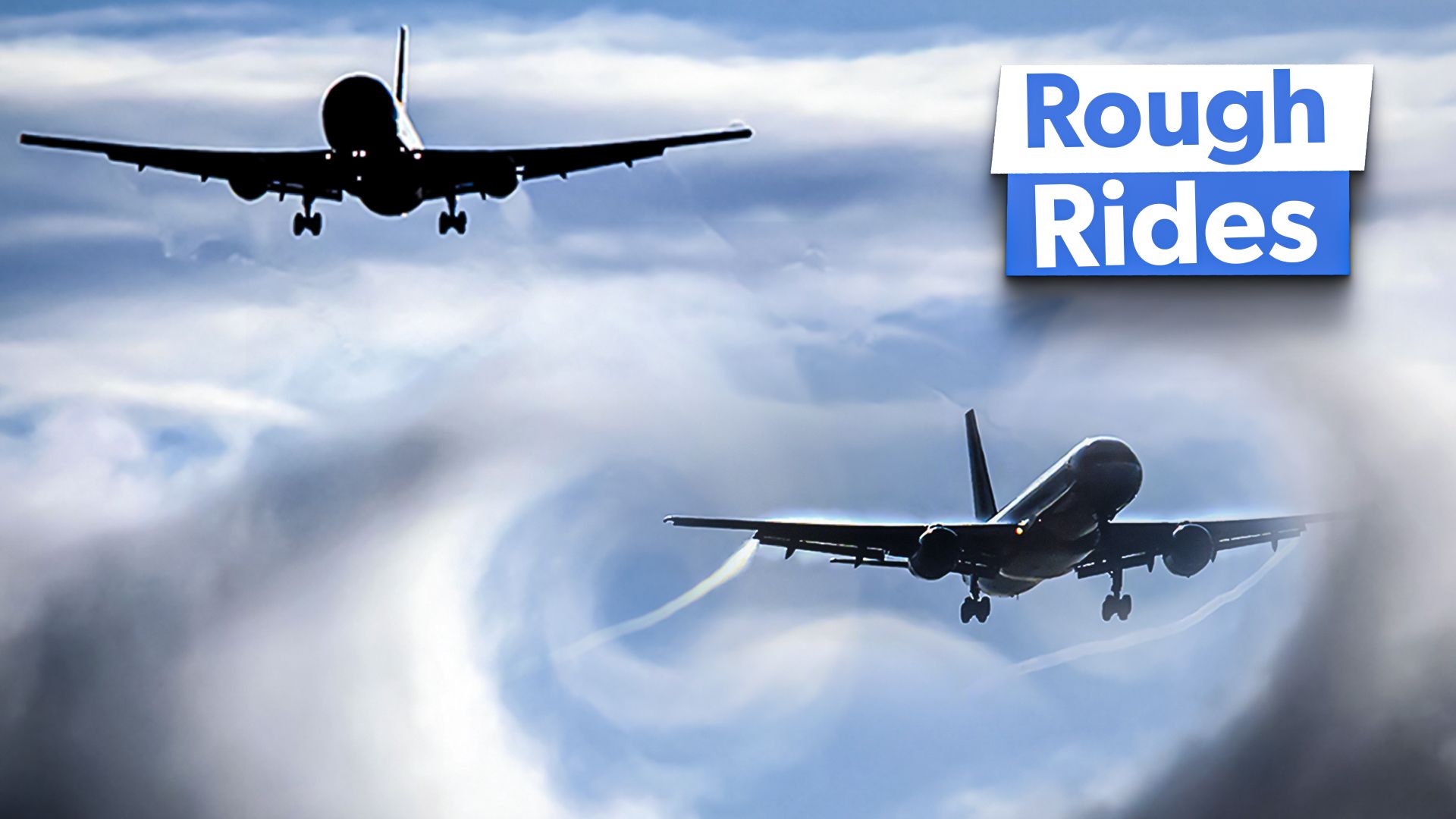Summary
- Turbulence is common on flights, but it rarely causes crashes for modern planes at cruise altitudes.
- Different types of turbulence exist, including Clear Air, Wind Shear, Thunderstorm, and Mountain Wave.
- The most turbulent routes in the world include Santiago to Santa Cruz, Almaty to Bishkek, and Lanzhou to Chengdu.
Turbulence has long been the worst part of flying for passengers, regardless of how little or often they fly. It occurs in varying degrees on almost every single flight, from a small bump or two to violent shaking that causes injuries and even deaths. It’s a source of fear for even the most experienced flyers.
While experiencing moderate to severe turbulence in flight is extremely nerve-wracking, the phenomenon is not inherently life-threatening. If anything, it is quite misunderstood. Turbulence doesn’t threaten modern airliners, especially at cruise altitudes. It is almost unheard of for a modern jetliner to crash due to turbulence alone.
What is Turbulence?
Turbulence is caused by sudden, irregular, and abrupt changes in the air caused by updrafts, downdrafts, and changes in wind direction and velocity.
The different types of turbulence that often affect commercial aircraft are:
- Clear Air Turbulence (CAT): CAT is the most common type of turbulence jetliners face at high altitudes (usually above 15,000 ft). It cannot be picked up by weather radar and is not associated with visual weather. It occurs due to the interaction of the jet stream with the surrounding air.
- Wind Shear: Sudden changes in wind direction, both horizontal and vertical, and wind speed can cause turbulence onboard an aircraft, changing the direction and movement of the aircraft through the air.
- Thunderstorm Turbulence: Turbulence in a thunderstorm ranges from severe to extreme and can cause an aircraft to break up. It’s one of the most dangerous types of turbulence. However, it is also easily avoided, thanks to weather reports and radar.
- Mountain Wave Turbulence: When air passes through uneven terrain, it disturbs the air mass and forces it upwards. On the downward side of the mountain, the air flows faster due to the lower pressure, which results in mountain waves that are quite dangerous to aircraft.
Turbulence affects some flight routes more than others due to geography, climate, and jet streams. Turbli, a turbulence prediction and tracking website, has analyzed over 150,000 routes and shows the most turbulent routes in 2023.
It measures turbulence according to the Eddy Dissipation Rate (EDR), which is the intensity of turbulence at a given location. According to Turbli, these are the most turbulent flight routes in the world.
Frequency of turbulence?
According to one study, while mild turbulence occurs on almost every flight, severe turbulence that can cause injuries occurs once every 50,000 departures or 790 annual cases.
How do you stay safe?
Always wear your seatbelt when flying, even when the seatbelt sign is off. Usually, turbulence is caught before an aircraft encounters it, thanks to weather reports and radar. Still, CAT cannot be predicted, so wearing your seatbelt will prevent you from being thrown around during severe turbulence.
1
Santiago (SCL) to Santa Cruz (VVI)
The world’s most turbulent route originates in South America.
The most turbulent route in the world is between Santiago International Airport (SCL) in Chile and Viru Viru International Airport (VVI) in Bolivia. This 1,905 km (1,183 mi) long route experiences turbulence at the rate of 17.568 EDRs. It is the only route on the list in the Americas.
The high rate of turbulence on the route is due to the aircraft passage over the Andes mountain range, one of the world’s largest mountain ranges. Mountain wave turbulence is formed when combined with the temperate climate and the associated unstable air.
Aircraft have to cross the mountain range to head to their destination. In doing so, they experience turbulence.
2
Almaty (ALA) to Bishkek (FRU)
The route is located in central Asia.
The second-most turbulent route in the world is between Almaty International Airport (ALA) in Kazakhstan and Manas International Airport (FRU) in Kyrgyzstan. The route is extremely short, the shortest on the list, at only 210 km (130 mi), and experiences turbulence at a rate of 17.457 EDRs, marginally lower than the number one spot.
When an aircraft flies from ALA to FRU, it has to cross the Northern Tien-Shan Mountain range, specifically the Trans-Ili Alatau Mountains. Once again, mountain wave turbulence will be present as air is forced to rise up and down the mountain face.

Related
Turbulence: 5 Things You Should Know
Turbulence is part of flying and is normally responsible for little more than spilling passengers’ drinks.
3
Lanzhou (LHW) to Chengdu (CTU)
The route takes passengers from Northwestern China to Southwestern China.
A regional route in China from Lanzhou Zhongchuan International Airport (LHW) to Chengdu Shuangliu International Airport (CTU) takes the number three spot. It experiences a rate of turbulence of 16.75 EDRs.
The route is 661 km (410 mi) long, and the area is surrounded by the Tibetan and Loess plateaus, which means the route is primarily dominated by mountainous topography, which results in a lot of mountain wave turbulence.
Smaller, narrowbody aircraft that are more susceptible to turbulence are used on short routes, which can make for an uncomfortable trip along this Chinese route.
4
Centrair (NGO) to Sendai (SDJ)
Japan’s first and only entry on the list.
The number four spot is taken by a 517 km (321 mi) regional route in Japan between Chubu Centrair International Airport (NGO) and Sendai Airport (SDJ). Unlike all the other routes on this list, these two airports are close to sea level. The route experiences turbulence at a rate of 16.579 EDRs.
However, an aircraft between these two airports must fly over various Japanese mountains, including Mount Azumaya. In addition, the weather conditions in Japan, especially during harsh winter windstorms, can cause severe turbulence. During the summer months, turbulence persists due to rising air forced over the various mountains in Japan, which results in powerful mountain wave turbulence.
5
Milan (MXP) to Geneva (GVA)
Europe’s only entry on the list, courtesy of the Alps.
In last place is the second-shortest route on the list. The route from Italy’s Milan Malpensa Airport (MXP) to Switzerland’s Geneva Airport (GVA) is only 214 km (132 mi) long. It experiences turbulence at the rate of 16.398 EDRs.
Aircraft traveling along the route must climb over and cross the Alps mountain range, the highest and largest mountain range in the European continent. As a result, the aircraft will encounter mountain wave turbulence due to air currents forced upward by the mountains. According to Turbli, it is the most turbulent route in Europe, followed by the route from Milan to Zurich.

Related
Turbulence: Emirates Says The Industry Will Be More Concerned About Passenger Movement
Tim Clark says the airlines are looking to predict air turbulence better and to take steps to ensure passengers are buckled up.

